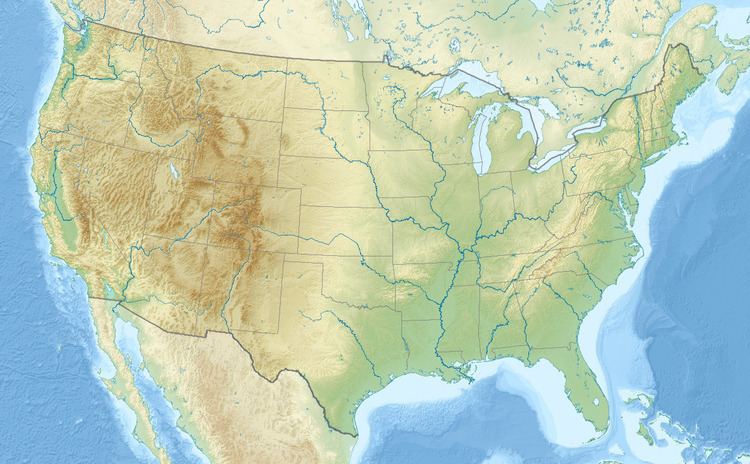Address Lewistown, IL 61542, USA Phone +1 309-535-2290 | Designated February 2, 2012 Area 45.01 km² Established 1993 | |
 | ||
Governing body U.S. Fish and Wildlife Service Website Emiquon National Wildlife Refuge Management | ||
Emiquon national wildlife refuge
The Emiquon National Wildlife Refuge is a 11,122-acre (45.01 km2) wetland wildlife refuge located in Waterford Township in Fulton County, Illinois across the Illinois River from the town of Havana. Only 3,000 acres (12 km2) are currently owned by the U.S. Fish and Wildlife Service. It is in the Central forest-grasslands transition ecoregion.
Contents
- Emiquon national wildlife refuge
- Emiquon national wildlife refuge spring migration
- HistoryEdit
- Restoration projectEdit
- References
Most of the wildlife refuge is made up of reclaimed agricultural land. A 7,100-acre (29 km2) reclamation project within the Refuge, the Emiquon Project, is operated by the Nature Conservancy, which is a partner with the U.S. Fish and Wildlife Service in the creation of the Refuge.
In February 2012, the Emiquon Complex, centering on the Emiquon NWR, was designated under the Ramsar Convention as a Wetland of International Importance.
Emiquon national wildlife refuge spring migration
HistoryEdit
The Emiquon National Wildlife Refuge and the Emiquon Project cover the historic beds of Flag Lake and Thompson Lake, which were shallow, alluvial lakes created by the Illinois River during the geological period that followed the last ice age. Heavy loads of sand and silt carried southwest by the river created almost random, undulating topography along the river's bed. The river responded to these deposits by repeatedly shifting its course, leaving long, narrow sections of abandoned riverbed behind it. Two of these sections became Flag Lake and Thompson Lake.
Surrounding these two lakes, and strung out along the western bank of the Illinois River, was a characteristic North American riverine ecosystem characterized by dense populations of shellfish, fish, migratory birds, and mammals. The Emiquon wetland became a favorite home for many Indians of the Illinois Territory for thousands of years, leaving 149 known archeological sites behind them within the parcels of land that make up the Project. These hunter-gatherers used and lived in and around both the wetlands of Emiquon and the adjacent river bluffs. During the centuries between 1000 CE and 1300 CE, many of them buried their dead in an adjacent blufftop, now the Dickson Mounds National Historic Site.
When new Americans of European ancestry began living along the Illinois River in the late 17th century, they brought several wetland diseases with them, notably malaria. Local Indian populations declined, and the settlers tried not to live in or near wetlands, believing them to be unhealthy places to live. When Fulton County was organized in 1823, the settlers selected a blufftop location several miles away as the county seat.
A population of local Illinois River settlers thinly settled the Emiquon riverbank, which was too wet for traditional European-style farming. The region continued to yield a living to fur trappers, hunters, and fishermen. However, in 1919 Joy Morton, a wealthy Chicago CEO, acquired the Emiquon area and had a levee built around it and drainage ditches dug. Emiquon became the Norris Farm, and the former wetlands and lake beds were drained and converted into cornfields. The formerly free-flowing Illinois River was dammed and confined to a narrow channel running between artificial banks. Much of Emiquon was low-lying and required periodic pumping with electric motors so that the land could remain dry and useful as farmland.
Restoration projectEdit
Throughout the 20th century, alterations to the Illinois riverbed caused severe damage to the ecological diversity and fish productivity of the river. Beginning in the 1960s, naturalists lobbied for restoration of parts of the riverbed and former wetlands. After extended negotiations, the Nature Conservancy acquired the 7,100-acre (29 km2) property in 2000. In 2007, the Conservancy enrolled a 6,400-acre (26 km2) parcel within the Project in the federally subsidized Wetlands Reserve Program.
By 2008, volunteers working with the Nature Conservancy had replanted 300,000 wetland trees, including black walnuts, swamp white oaks, and pecans, and 8,000 pounds of grassland seed. The Conservancy believed that the Emiquon Project was the second largest wetlands restoration project in the United States, behind the Restoration of the Everglades.
As part of the restoration efforts, drainage pumps were turned off and one of the natural lake beds within the Project, Thompson Lake, began to refill. As of 2008, Thompson Lake was a 2,000-acre (8.1 km2) lake within the Project. This compares to the lake's original size of 1,800-acre (7.3 km2) when it was a natural lake. The reborn lake and adjacent wetlands were attractive to waterbirds, with 17 separate species of ducks reported.
As of 2009, the U.S. Fish and Wildlife Service's long-range master plan for the Emiquon National Wildlife Refuge including acquiring the Emiquon Project's land, building out the refuge's 11,122-acre (45.01 km2) footprint, and enrolling the new Refuge into the Illinois River National Wildlife Refuge Complex, managed from the Chautauqua National Wildlife Refuge's headquarters in Havana.
